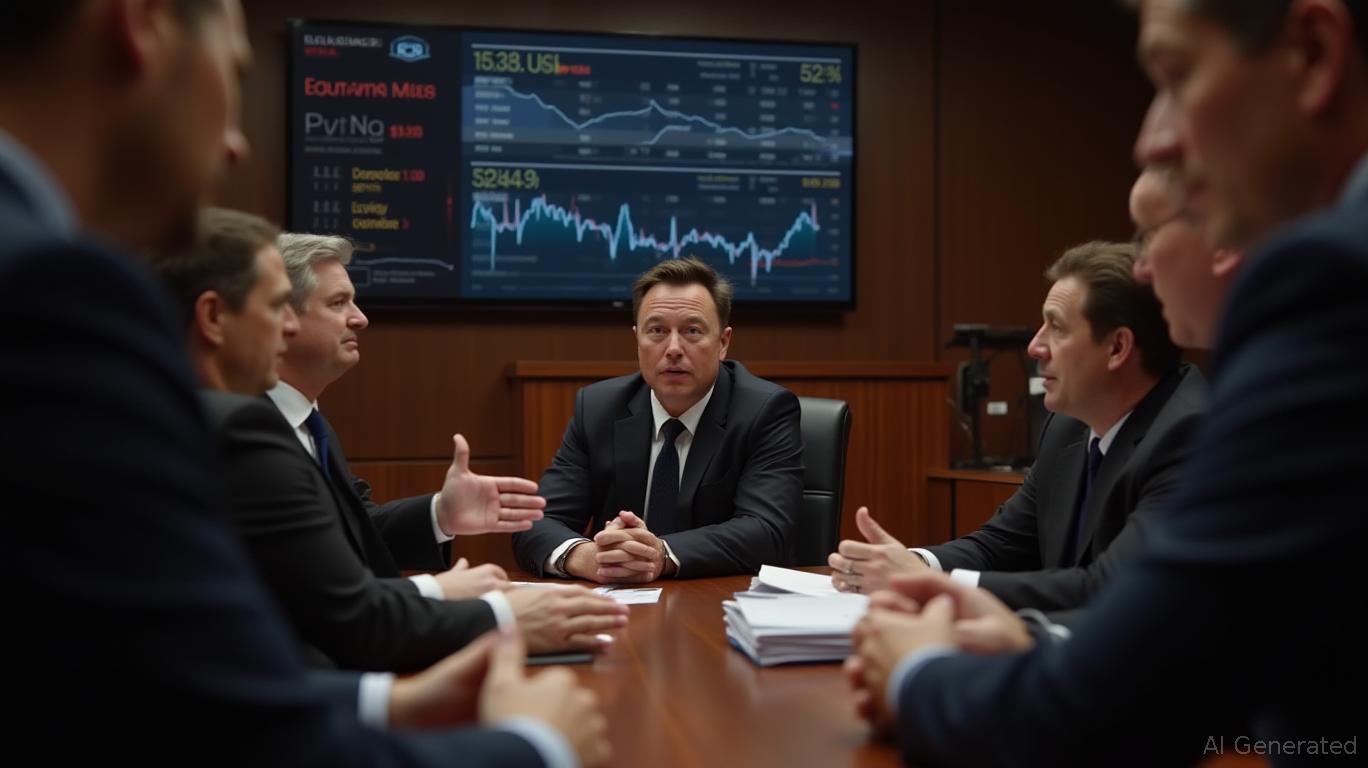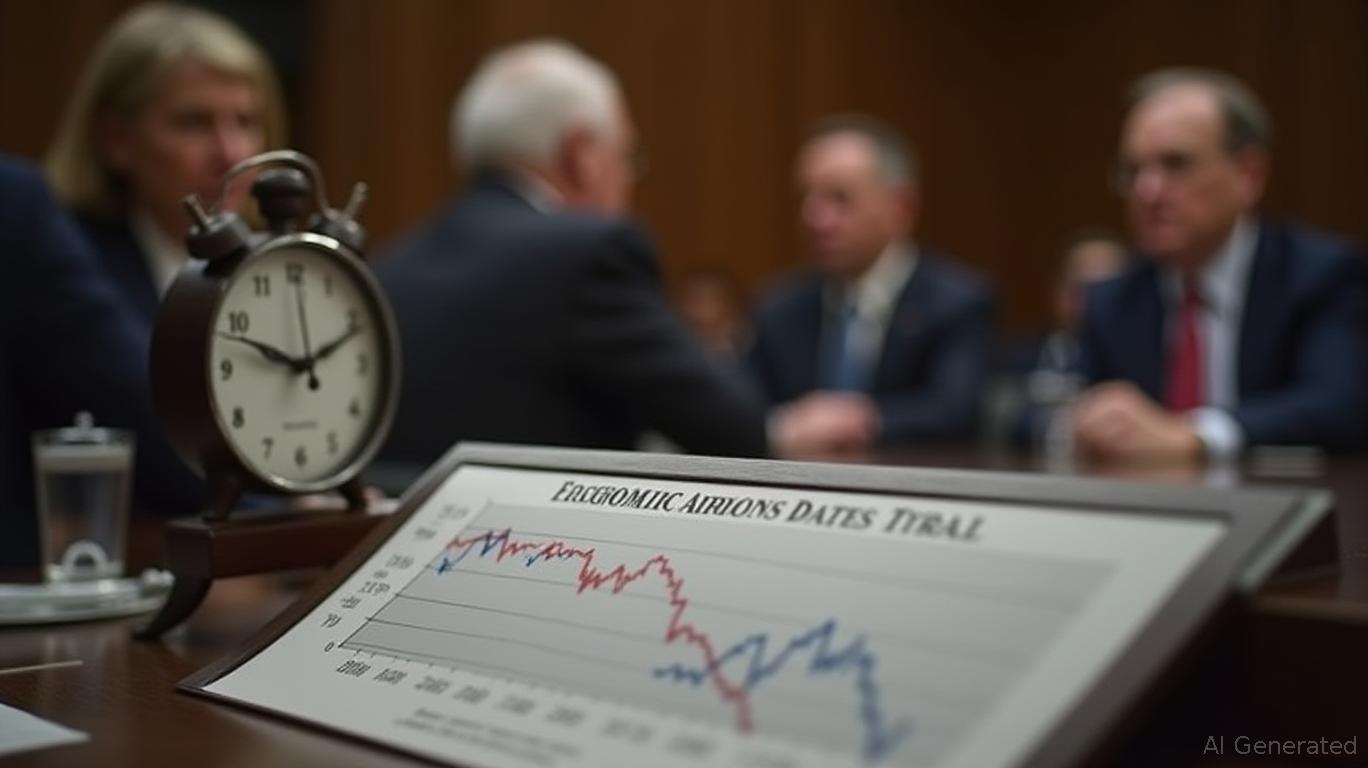Trump’s Tomahawk Conundrum: Support for Ukraine or Risking Further Conflict?
- U.S. Pentagon clears Tomahawk missile supply to Ukraine, removing technical barriers but leaving final approval to President Trump. - Zelenskyy argues 1,000-mile-range missiles would enable strikes on Russian military and energy targets, while Trump cites U.S. defense priorities and escalation risks. - European allies urge action to pressure Putin, but NATO supports Trump's caution due to training requirements and potential U.S.-Russia tensions. - Russia's use of banned 9M729 missiles and U.S. sanctions
The U.S. Department of Defense has approved the possible transfer of long-range Tomahawk missiles to Ukraine, eliminating a significant technical obstacle and placing the ultimate decision with President Donald Trump. As reported by CNN and other media, the Pentagon concluded that sending these missiles would not compromise American reserves or national security, according to a
Zelenskyy has consistently highlighted the tactical value of Tomahawk missiles, asserting that their 1,000-mile range would allow Ukraine to hit targets deep within Russia, including military storage sites, energy facilities, and other vital infrastructure, Forbes reported. He believes such attacks could undermine Russia’s military operations and force Moscow to the negotiating table. Zelenskyy reiterated these points during a recent meeting at the White House with Trump, emphasizing the potential to weaken Russian forces.

Nevertheless, Trump has voiced concerns, saying he is hesitant to allocate weapons away from U.S. defense priorities, a
Although the Pentagon’s approval does not settle these disputes, it now places the spotlight on Trump’s forthcoming decision. European partners, including Finland’s Prime Minister Petteri Orpo, have encouraged the U.S. to move ahead, arguing that arming Ukraine is crucial for increasing pressure on Putin. Meanwhile, NATO Secretary-General Mark Rutte has backed Trump’s measured stance, pointing out that operating the Tomahawk system requires extensive training before it can be used in the field.
This discussion is further complicated by Russia’s deployment of its own banned 9M729 cruise missiles, which have recently been used in attacks on Ukraine, according to a
While Trump weighs his options, the administration has developed backup plans to quickly deliver the missiles if he gives the green light, Newsmax reported. At the same time, the president has ramped up economic sanctions against Russia, targeting major state-run oil companies like Rosneft and Lukoil. These actions, together with the possible military shift, reflect a dual approach of economic pressure and strategic uncertainty.
Trump’s ultimate decision could significantly influence the direction of the Russia-Ukraine conflict and the extent of U.S. involvement. While the Pentagon’s go-ahead removes a practical barrier, the political considerations remain intricate, balancing America’s security needs with the strategic necessity of supporting Ukraine’s defense.
Disclaimer: The content of this article solely reflects the author's opinion and does not represent the platform in any capacity. This article is not intended to serve as a reference for making investment decisions.
You may also like
Supreme Court and Tesla Investors Challenge Authority and Compensation in Fragmented Markets
- Supreme Court will review Trump's emergency tariffs under IEEPA on Nov 5, testing executive power limits amid conflicting lower court rulings. - Legal experts warn court's decision could redefine congressional-executive balance by validating or invalidating unilateral tariff authority. - Tesla shareholders vote Nov 6 on Musk's $1T pay package tied to AI/robotics milestones, facing governance criticism and potential leadership risks. - Both cases highlight polarized market dynamics: one testing judicial r

Fed Navigates Uncertainty as Data-Dependent Rate Decisions Hindered by Shutdown
- The Fed's 25-basis-point rate cut reduced 2025 easing expectations, with December cut odds at 69.8% amid hawkish signals and FOMC divisions. - A split FOMC vote highlighted inflation-labor market balancing struggles, as core inflation remains 2.7% above the 2% target despite trade truce measures. - Quantitative tightening ends by December 1 amid U.S. government shutdown, complicating data-driven policymaking and increasing December cut uncertainty. - Political pressures mount with Trump criticizing Powel

Bitcoin News Update: Institutions Propel Crypto Diversification While AI and Scalability Transform Investment Focus
- Blazpay completes $963,300 presale audit, selling 85.6% of tokens as AI-powered crypto ecosystem targets 2025 investment spotlight. - Tron's DEX volume surges 174% to $3.04B with 87.7M active addresses, boosted by Halliday's 60-second onboarding integration. - DeepSnitch AI (DSNT) raises $490K with 10.9M tokens staked, positioning itself as undervalued scam-fighting alternative to Ethereum. - Solana's BSOL ETF gains $197M inflows vs. Bitcoin's $543M outflows, signaling institutional shift toward high-per

Bitcoin News Update: La Culex Takes a Bold Bet: Will Meme-Based Cryptocurrency Surpass Bitcoin’s Reliability?
- La Culex ($CULEX) presale targets 30,683% ROI with $0.00002274 tokens, leveraging meme-driven mechanics and structured tokenomics including burns and staking. - Unlike Bitcoin's $112k stability or TRON's $0.0946 growth, La Culex offers asymmetric risk-reward via community-driven engagement and gamified retail appeal. - Ethereum-based framework with automatic liquidity and transparent governance differentiates it from meme coins, mirroring MoonBull's utility-driven model. - Dynamic pricing increases token
